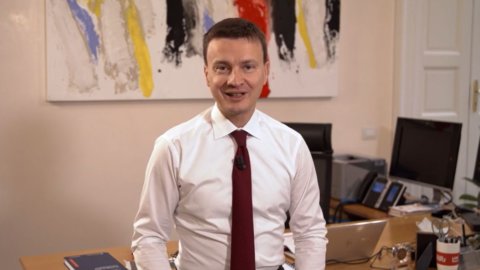Twenty-five years after the end of central planning, Poland has made significant progress in terms of growth and development. GDP per capita more than doubled, outpacing regional partners such as Czech Republic e Hungary. The country has also quite quickly recovered the gap with Western European markets such as Germany, Italy and Spain: in particular, after joining the EU in 2004, per capita income rose from just over 34% of the average EU-15 in 1990 to about 55% in 2012. And this growth performance of the Polish economy has been accompanied by an equally impressive expansion in international trade. Over the past 25 years, Poland's trade value has more than doubled as a percentage of GDP, reaching 1% of global goods exports and 0,87% of services exports in 2012. During the first decade of the systemic transformation process, in ways quite typical for an early recovery phase, the average annual contribution of Net exports growth was negative against a strong expansion in domestic demand, especially investment. La situation has definitely changed after the entry
in the EU in 2004, when net exports started to contribute positively to GDP growth.
Poland has clearly benefited from the effects of the catch-up process, achieving impressive productivity gains as measured by total factor productivity (TFP). The country has undergone a profound transformation in terms of market economy, reaching a significant growth potential typical of the initial phase of a reconversion process. And, as part of the same, important contributions have come from capital accumulation, with the essential involvement of foreign sources. Tuttavia, as the gap with the more advanced economies is closed and as a country moves up the income ladder, efficiency gains become increasingly difficult to achieve. Without forgetting that, faced with the dynamics of large migratory flows, demographic factors have already transformed or become a brake on growth for most EU members including Poland. Poland is indeed between countries with the least favorable long-term projections for the ratio of the elderly to the working-age population. In order to safeguard the impressive growth record in the coming years and in order to avoid the so-called middle-income trap, Poland then needs to make strategic choices. Historically, countries that mainly exploit growth reserves on the basis of cost efficiency gains will, after reaching a certain level of per capita income, face a prolonged slowdown in average real GDP growth. Tale slowdown emerges when a recovering country fails to promote the factors that favor TFP growth in the medium to long term, in order to adapt to international competition with increasingly advanced and innovative products and services. AND the key factors that promote the growth of TFP in the medium to long term can be found in the quality of human and physical capital, the quantity and intensity of innovation and R&D and the elements that facilitate the mobility of economic agents.
If you look at the gross value added (GVA) ratio trends in medium-high-tech industries and medium-low- and low-tech sectors, while the Czech Republic, Hungary and Poland started out with very similar and low values, the latter it has made little progress since the mid-1990s, although it has managed to catch up with Italy, a country generally considered not to be at the forefront of high-tech manufacturing in Europe. In case of Hungary, the main driving force was an increase in the GVA share of electronics and pharmaceuticals, while the Czech Republic saw progress thanks to the expansion of the automotive and transport sector. In this context, the performance of the Polish economy dragged along by an increase in medium-low technology sectors, such as the production of rubber, plastics and non-metallic minerals. All in all, Polish export it lacks comparative advantage in medium-high and high-tech goods. Most high-tech industries, such as pharmaceuticals, office equipment, aircraft, and professional equipment, have a particularly low revealed comparative advantage (RCA); the only exception being telecommunication equipment. RCA for medium to high-tech goods demonstrates that only certain product groups possess a comparative advantage, see dyeing materials, cosmetics, fertilizers, power generation machines, road vehicles and railway equipment.
During the past 15 years, the cost real unitary labor in Poland has decreased significantly and steadily in relation to the main trading partner, Germany, but also in relation to Hungary and the Czech Republic. Tuttavia, the country lagged behind in terms of competitiveness, not price. In particular, the innovative capacity of Polish companies reveals a clear weakness, as can be seen from the classification among “modest innovators” of the Innovation Union Scoreboard. And even though R&D expenditure experienced an average annual growth rate of 9,7% between 2007 and 2012, reaching 0,9% of GDP in 2012, this figure is still far below the EU average (2,1. XNUMX% of GDP). In particular, R&D expenditure remains negligible, also in relation to other regional partners: weaknesses are mainly observed in the declining level of innovation activity of firms, the contraction of synergies between commercial and research institutions and the overall low performance of innovative firms. In particular, il Polish innovation support model is risk-averse, and is mainly based on grants from public funds. Furthermore, the same economic context weighs on the competitiveness of the Polish economy: the entrepreneurs they suffer from entry and exit barriers which act as a brake on society and job creation, hampering competition. The registration and bankruptcy processes remain lengthy, time-consuming and resource-intensive, despite government initiatives to cut red tape. In the end, la segmentation of the social security and pension system, in particular the provisions for miners and farmers, è an obstacle to cross-sector labor mobility, which in turn can undermine the reallocation of resources in medium-high and high-tech sectors.
Identifying and designing structural reforms to support growth in the medium and long term is one thing, implementing such measures is another. And the kinds of reforms needed to sustain Poland's economic success in the medium to long term have been known for a long time. As indicated in the last ECFIN focusspecific recommendations (CSR) are issued annually by the European Council, underlining the priorities for the country, and these have remained substantially unchanged since 2011. Le Polish authorities deserve credit for implementing some notable reform measures, such as implementing the liberalization of regulated professions or adopting a lifelong learning strategy, and without forgetting other interventions such as the reform of corporate bankruptcy. However, as evidenced by both the implementation of the CSR and the OECD analysis, progress is relatively slow and its implementation still uncertain. Furthermore, more substantial reforms such as that of special pension schemes, still face important political obstacles, which may even increase in view of the forthcoming general elections in 2015. While such obstacles are part of the political reality and cannot be ignored, however experience points to a number of elements which, country specifics aside, tend to underpin successful structural reforms. As long as the local economy performs at a good level, the room for maneuver becomes more difficult: only if the government effectively and consistently communicates the future costs of maintaining the status quo will it be able to garner the necessary support among voters and stakeholders.
Poland's growth performance over the past 25 years has been remarkable, in a country that has managed the transition from central planning to a market economy with great success. However, the past does not necessarily offer sure guarantees for the future. Il growth model is biased towards medium-low technology sectors using relatively low-skilled and cheap labor. For avoid the middle-income trap and to safeguard growth potential in the coming years, the model needs to evolve with a series of structural reforms, since the opportunity costs of the successive reforms are gradually increasing. Some reforms, such as improving the business climate, would not involve any significant fiscal effort or distributional expenditure and could be vigorously pursued even in the short term. Other processes are more complex and need better preparation and communication, and perhaps even a forward electoral mandate. As always, the hardest part of any journey is taking the first step.





